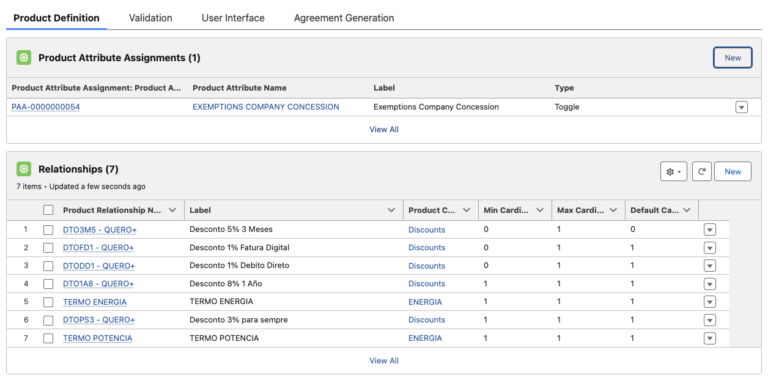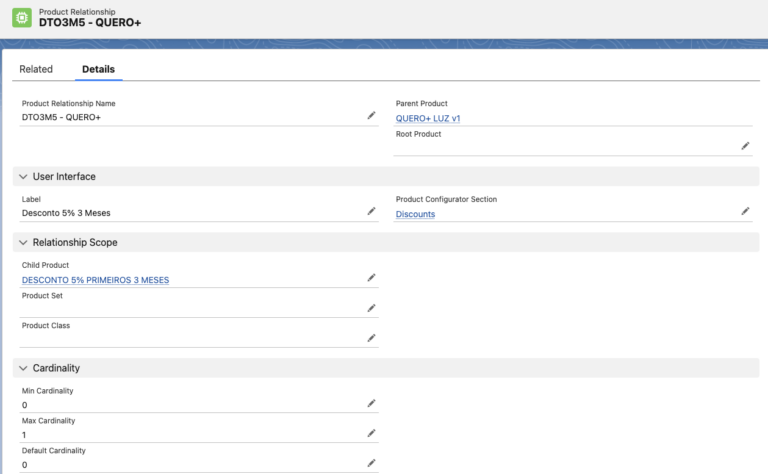Product & Components Management
This process focuses on the administration of products and components, ensuring their proper configuration and compatibility within the catalog.
Product Management
Wattyo enables the management of versionable products, storing their configuration in each version.
The standard product model in Wattyo allows:
- Establishing multiple relationships between products and catalogs.
- Defining product add-ons.
- Configuring visible attributes in the product configurator.
- Setting eligibility and compatibility rules.
- Defining validation rules that condition activation and contract generation.
- Specifying contract terms to be generated upon activation.

The image displays a product configuration where a “Toggle” attribute can be selected to indicate whether an exemption term should apply.
Additionally, all related component-type products are included, along with their default, maximum, and minimum cardinality, which defines their eligibility within the configured product’s cart.
Component Product Management
Component-type products are also versionable and allow for a detailed configuration of their attributes.
Once a component is defined, it can be associated with multiple products while maintaining its original configuration.
Eligibility, compatibility, and validation rules can be established, ensuring flexible management of components within the catalog.

The image displays the configuration of a “5% Discount for the First 3 Months” component, which is set as optional by defining a minimum cardinality of 0 and a maximum of 1, ensuring that only one instance can be included.
By default, this component is not included in the cart when selecting the product, as it may require additional validations or negotiation with the customer.
Two-Level Products
In Wattyo, products are structured into two levels:
- Main Product
- Product Add-ons
Both levels can include configurable attributes, enabling precise customization tailored to business needs.
Product Relationship – Product Sets
Facilitates the configuration of product bundles and the modification of grouping rules without requiring changes to individual product configurations.
Allows the definition of complementary product sets and the establishment of cardinality rules.









